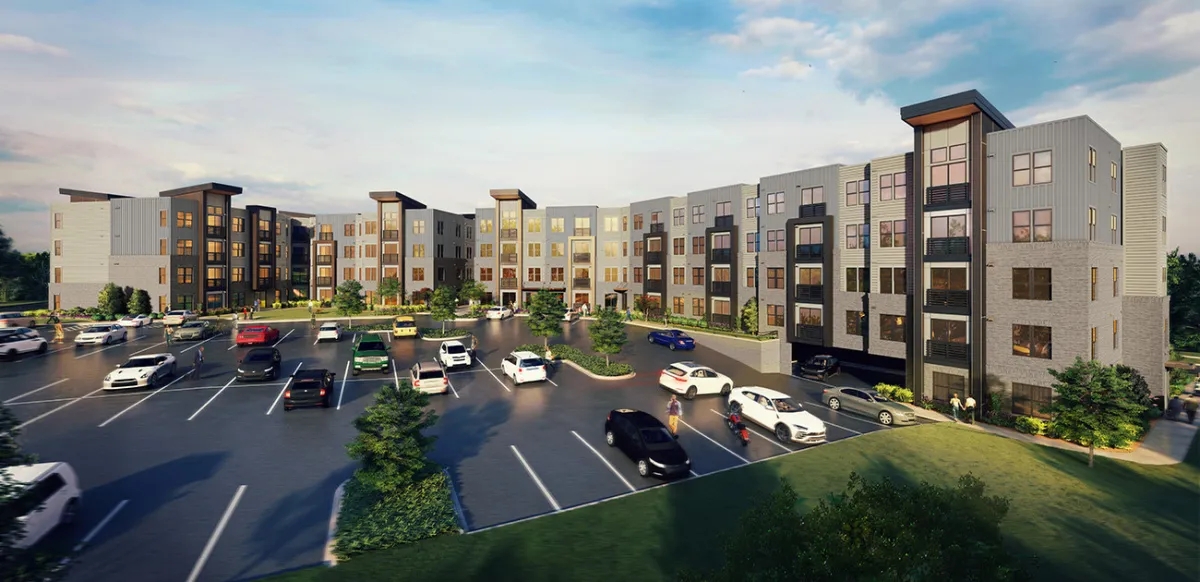The Federal Reserve is considering rent growth as part of its inflation calculations, which may impact when rates will be cut.

Commercial real estate could stand to benefit immensely from any Federal Reserve rate cuts this year, according to Lawrence Yun of National Association of REALTORS(r). Under high interest rates, the number of transactions dropped 60% between 2023-2021 according to Lawrence Yun at Thursday’s Real Estate Forecast Summit(link is external). Lowering interest rates would allow industries and collateral values to recover as well as drive transactions and leasing activity forward.
The Federal Reserve bases its decisions about interest rate cuts on certain data points. Consumer price inflation currently sits at 3.1% and should ideally fall closer to 2% or even below. You might ask, “Don’t 3% and 2% look pretty similar?,” explained Yun; however, in economics 2% is generally preferred over 3.1%.
Yun acknowledged the pressure to reach 2% by setting progress markers:
Yun forecast that the Federal Reserve could make four or six rate cuts over the coming two years, “extending whatever doesn’t take place this year into next,” adding that inflation should gradually ease off as we progress into 2025. He predicted that 10-year Treasury yield would settle around 3.5%.
Commercial real estate prices should stabilize and recover over the next year or so; however, challenges persist within the office sector. Furthermore, moderate economic growth should still help drive net leasing and investment sales.
Land and single-family development will likely do well, according to Yun. Economists and the Federal Reserve are using rents as an important data point when assessing interest rate stance, according to him. Unfortunately, rental prices don’t seem to rise to the same degree that Consumer Price Index shows; using different data could influence monetary policy significantly; commercial real estate relies heavily on how it unfolds – “measurements of how rents are growing is one key element in how we measure inflation – which in turn determines what action the Federal Reserve may take next.”
CPI data comes from the Bureau of Labor Statistics, which measures what Americans pay in rent. When rent spikes and then cools, it doesn’t usually impact renters until it comes time for renewal or moving – an event which often takes years. According to Popov’s research company’s estimates of what was happening on the market (instead of what was reported), with most decelerations growth taking six quarters to register with CPI estimates.
Apartment List’s analysis of metro rent growth revealed the Sun Belt region to be experiencing the fastest rental decreases. Austin, Texas leads this decline, followed by Atlanta; Jacksonville; Fla; Raleigh. These cities also are seeing job expansion and an influx of renters as residents.
Popov noted that supply was the primary driver behind these metros’ declines, not job growth or popularity among renters; more specifically, multifamily units coming onto the market and creating significant pricing pressure in those areas of the Sun Belt. As more lease-ups enter the market and renters gain greater options through them, rents have decreased from their peak levels; these metros aren’t becoming less desirable among renters or experiencing reduced job growth; rather they’re providing greater choices while simultaneously decreasing rents.
On the other hand, Midwestern markets dominated the list of metros with rapidly growing rents: Grand Rapids, Michigan; Milwaukee; St Louis and Louisville in Kentucky are some examples.
Popov noted that multifamily vacancy rates continue to rise. “Our national vacancy index shows this pattern. At the height of 2021’s boom period, very few chairs remained for multifamily musical chairs – yet the market has continued its slow and steady recovery.”
Popov estimates that nearly 1 million multifamily units are currently under construction and plans on having over half of them hit the market by 2024, further exerting downward pressure on rent prices, as stated by him.


